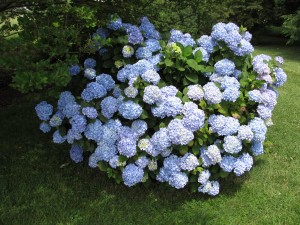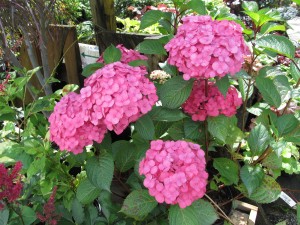The introduction of Endless Summer® hydrangeas in the 1990’s got gardeners excited about growing mophead hydrangeas (Hydrangea macrophylla) again. Mophead hydrangeas bloom both on old wood in the spring and again on new wood in mid-summer. Flowers have either a blue/pink color depending on the pH of the soil. Endless Summer hydrangeas bloomed in cooler areas previously off limits for mopheads.
Bad Winter? Endless Summer hydrangea series are still very dependable and have spawned a number of new series. Still, abnormally cold weather in many areas may greatly decrease late spring/summer flower numbers. On the first day of spring ask yourself how the previous winter felt personally. If you rate the winter as bad, likely spring mophead bloom will be less.
Available sunlight. In the north (zones 4 – 5), mopheads can handle almost full day sun. In zones 6 and 7 reduce to 4-5 hours of mostly morning sunlight, and in zone 8 to 9 in day-long high shade. Less than optimum light levels means less flowers.
Wrong Cultivar. The marketplace is very confusing with many non-hardy cultivars still being sold.
Late Freezes. Hydrangea buds open very early. Late spring freezes frequently destroy or injure flower buds and new growth. Keep the crown (plant base) heavily mulch until mid-May in most areas.
Over-fertilizing hydrangeas may result in dark green foliage (a good thing) and fewer flowers (not so good). In USDA zones 4 and 5, do not fertilize past August 15th, as it may lead to winter injury.
Overwatering mopheads may push too much growth and fewer flowers. On hot summer days seeing mophead leaves wilting in mid-day is very common. Irrigate once weekly, 1 to 1 ½ inches of water, rather than a little bit every day.
Pruning mopheads in the fall is a mistake. Spring flowers are borne on the old wood.



 Posted in
Posted in 
